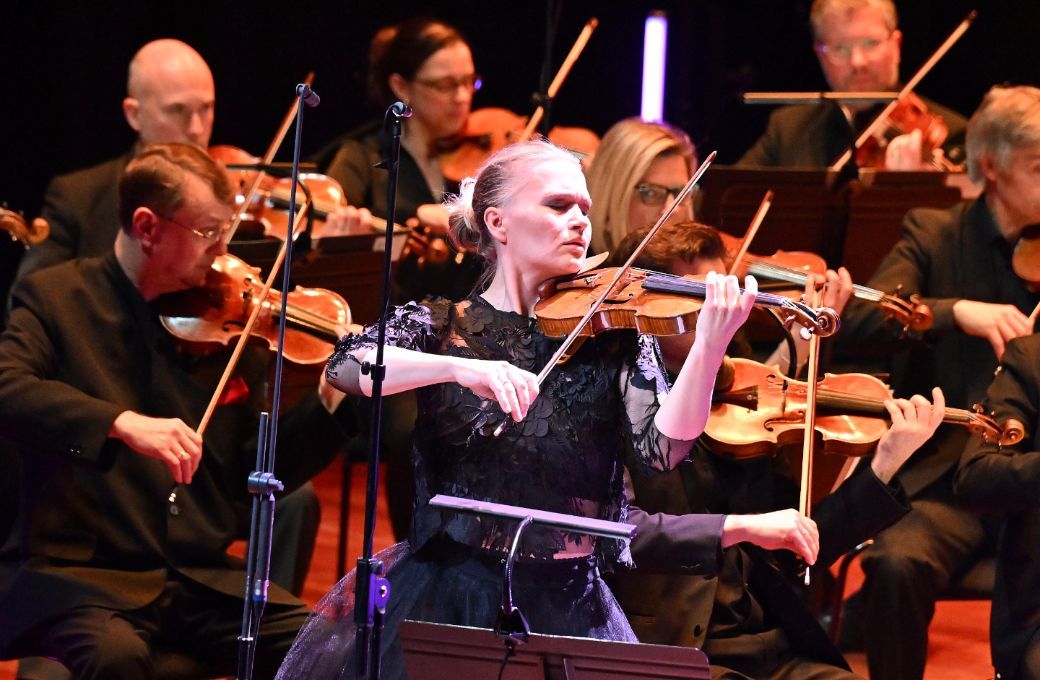It was gratifying to see a large audience, many of whom were young, at a classical music concert. This was largely thanks to the Norwegian soloist Mari Samuelsen, who has garnered a large following of younger people thanks to her recordings of composers like Max Richter and Philip Glass, and also in her championship of female composers in her recent album release, Lys.
The evening kicked off with music by Philip Glass, though not with Samuelsen as the soloist. The Light is a purely orchestral piece, written in 1987, but its musical components are familiar and effective. Glass’ musical material is like jigsaw puzzle pieces that can be put together to make different pictures, depending on the composer's intentions or needs. The assembled image here is cosmic and grand, with full orchestral climaxes alternating with quieter passages that build up tension to the next wave. Anna-Maria Helsing and the BBC Concert Orchestra delivered the 20-minute span of music with an unflappable ease and rich resonant brass.
Samuelsen made her entrance with an ethereal performance of Lonely Angel by Pēteris Vasks. Still a relative stranger to UK concert halls, Vasks' music, as evidenced here, should be better known. Like The Lark Ascending meets Shostakovich, it nevertheless speaks with its own ecstatic voice, which Samuelsen fully embraced and projected through a seamless melodic line.
Samuelsen followed this with two works either written or arranged for her. German composer Meredi is one of the composers featured in the album Lys, and this specially composed short work, White Flowers Take Their Bath, makes its impact with simple, but passionate lyrical lines and undulating string accompaniment. An arrangement by Max Knoth of Bær by Hildur Guðnadóttir was intensely lyrical and poignant in Samuelsen’s account.

However, these works were somewhat overshadowed by Arvo Pärt’s Fratres in the arrangement for strings and percussion. This masterpiece of understated emotions and shifting textures is one of the most effective and enduring works from the 1970s, seeming to be far more than the sum of its parts. In Samuelsen’s hands the solo part was in turns radiant and quixotic and a moving experience.
Einojuhani Rautavaara’s Symphony no. 7, “Angel of Light” was written in 1995 and is the last of his series of works with a focus on the angelic. The composer's depiction of these heavenly creatures is fiery and forbidding, not at all the usual association. The atmosphere of the work is austere, brooding and monumental. Rautavaara's harmonic language, which seems to pay lip service to tonality clothed in lush romantic orchestral textures, in fact uses the twelve-tone system. The effect of this is both disconcerting and mysteriously fascinating for the listener. Helsing and the BBCCO gave a good account of the work, the strings producing a rich carpet of sound and the brass were particularly fulsome. Each of the four movements was well characterised and the overall structure was conveyed clearly, lacking only a last ounce of refinement and inspiration.


